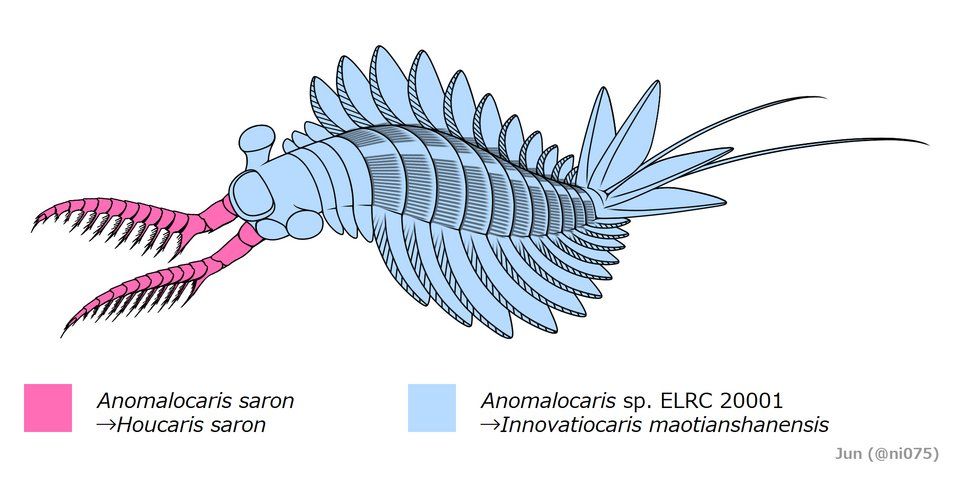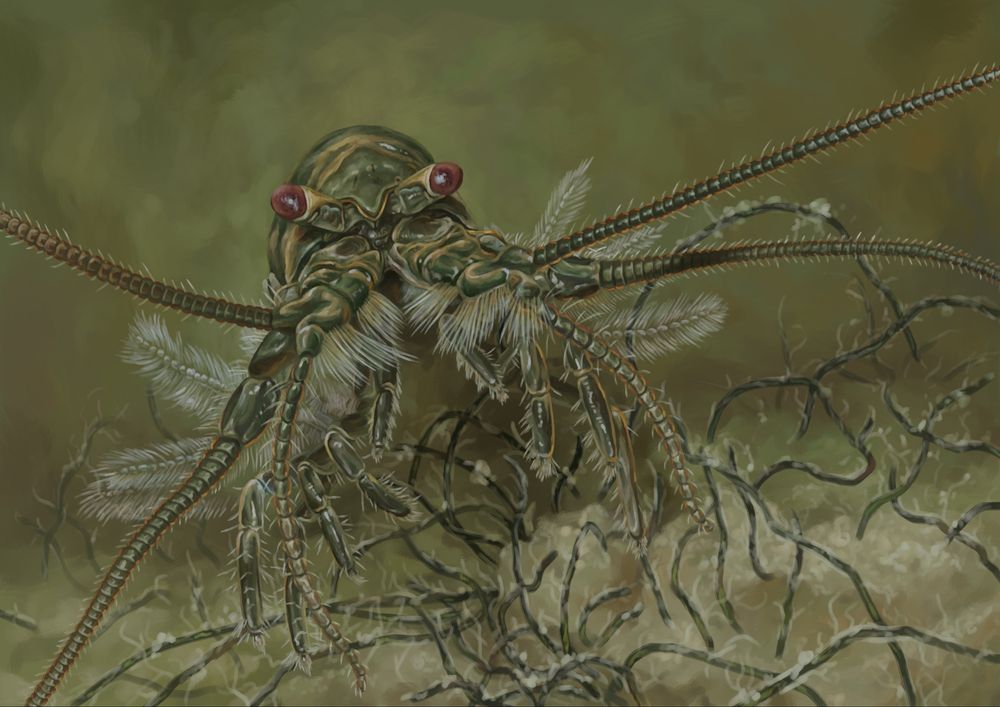
Digital illustration of a syncaridan, a strange crustacean with many appendages, swimming towards the viewer
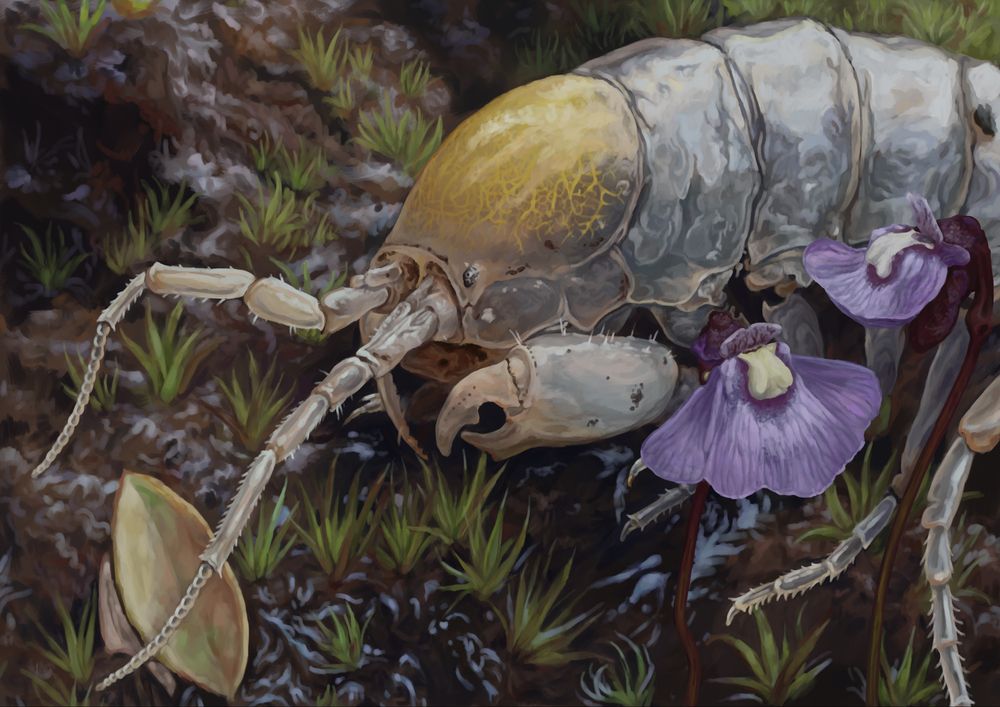
Digital illustration of Phreatoicopsis raffae, an unusual isopod walking through wet moss
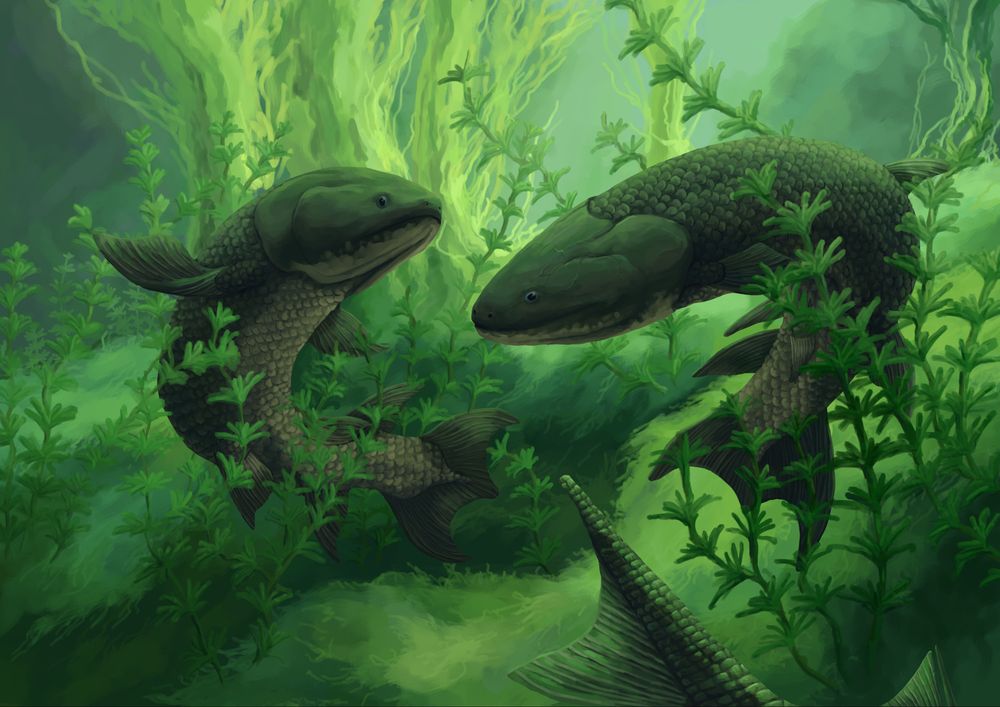
Digital illustration of two eusthenopteron fish swimming through algae
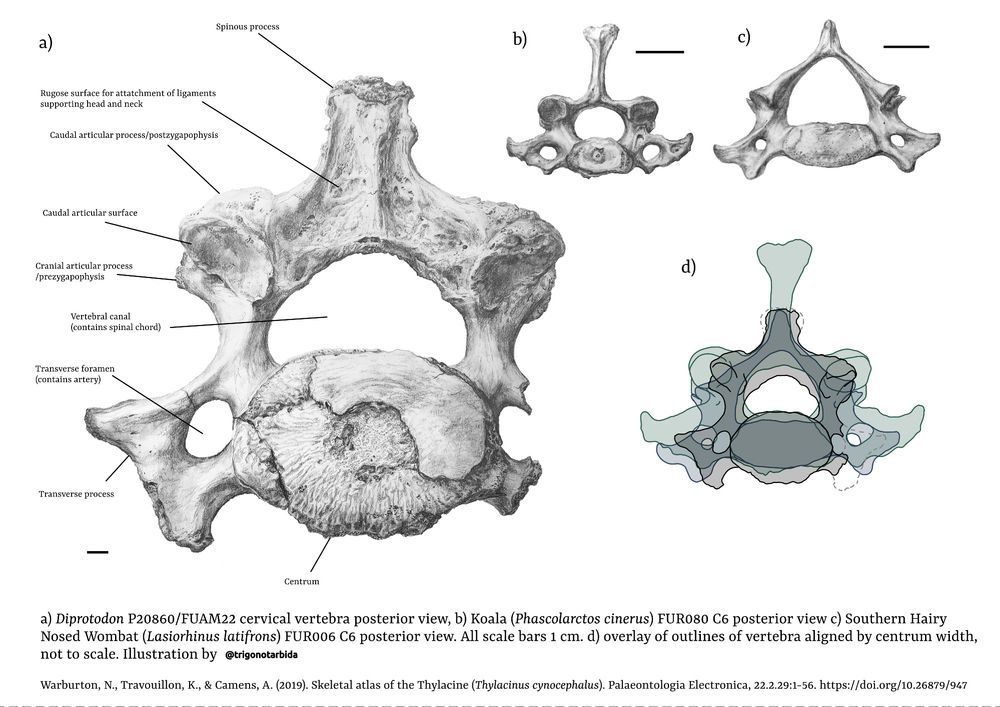
Diagram with graphite illustrations of a diprotodon vertebra compared to a koala and wombat
Happy #PortfolioDay!
I'm a palaeontology student and mostly draw various unusual animals (both extinct and extant), and like doing interesting vegetation and backgrounds! I also do some more technical scientific illustration.
Contact for commissions is gencoelacanth@gmail.com
08.04.2025 13:05 — 👍 163 🔁 47 💬 7 📌 2

Vintage illustration of numbered trilobites of various sizes, their fossils, and a short description on the bottom.
#Trilobites of the Pimenteira Formation, Devonian Brazil.
#paleoart #sciart
05.10.2025 07:07 — 👍 45 🔁 12 💬 0 📌 1
Greetings little one 🤓🥹
28.09.2025 01:26 — 👍 222 🔁 35 💬 13 📌 0
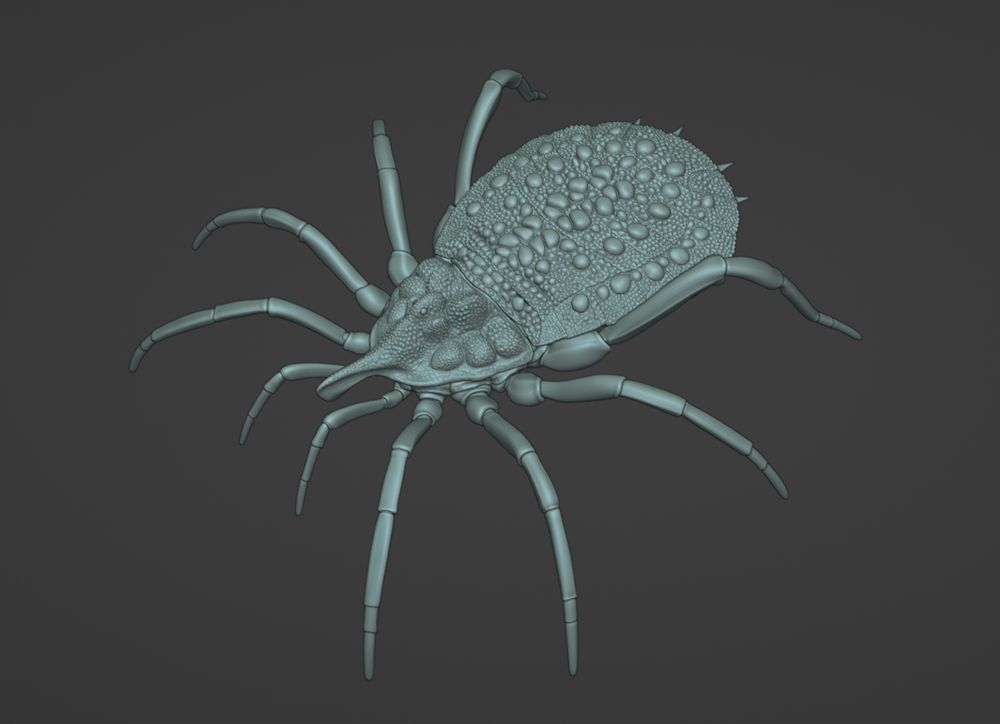
oh I forgot I made this too...Rare venture to invertebrates. but who doesnt like nice Trigonotarbid
22.11.2024 19:53 — 👍 101 🔁 16 💬 2 📌 1

Plesiosiro, an obscure arachnid from the carboniferous period.
Designed by me in 2011.
Structure based on a 48 by 48 unit grid.
This little critter caught my attention because of the segments split in half.

Goniotarbus, an obscure arachnid from the carboniferous period.
Designed by me in 2011.
Structure based on a 48 by 48 unit grid.
This model is no longer accurate,
The interpretative reference image I had used to produce this model is now out of date.

Pleophrynus, a Trigonotarbid from the carboniferous period.
Designed by me in 2020. The structure is based on a 64 by 64 unit diagonal grid.
I've had a Trigonotarbid in my sights for a long time as a subject but I was eyeing Palaeocharinus originally.
The complex segmentation of the abdomen was simultaneously what piqued my interest in the first place but a daunting task all the same, which hampered any progress.
Many years have passed and that dream model has yet to materialize.
Then one day a friend approached with an inquiry for a commission to recreate a different Trigonotarbid altogether and I jumped at the opportunity.
This is the result.
I'm still seeing opportunities for improvement but it really was the best I could do three years ago.

An origami model of a hooded tick spider.
Designed by me in 2011, based on a 48 by 48 unit grid.
These really are funky little oddballs.
I still have the struggle it was to try and find usable reference images in vivid memory.
Thankfully, if and when I deem this one is due for a redo, I'm going to have much better references to compare against. :)
More ancient chelicerates for #InverteFest!
These are:
Plesiosiro (Haptopoda), Goniotarbus (Phalangiotarbida), Pleophrynus (Trigonotarbida) and the still surviving hooded tick spider (Ricinulei), which were discovered in the fossil record first and only then also found in the wild.
31.08.2023 21:38 — 👍 49 🔁 14 💬 2 📌 0
 06.08.2025 14:40 — 👍 55 🔁 16 💬 2 📌 0
06.08.2025 14:40 — 👍 55 🔁 16 💬 2 📌 0

The recently re-described Palaeocama anthrax is by far one of the weirdest lobopodians discovered yet! This Carboniferous worm was not only was it covered in hundreds of poisonous spines, but it's also the only freshwater non-Tardigrade lobopodian known!
#paleoart #art #sciart #blender
27.07.2025 21:40 — 👍 10 🔁 4 💬 1 📌 0
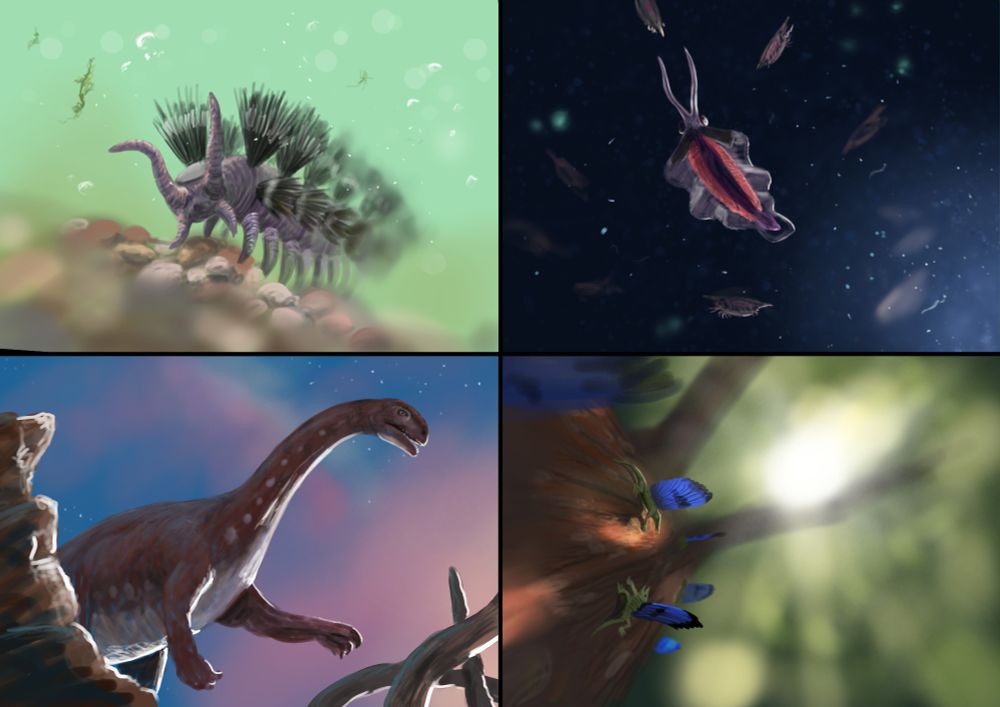
Results from the #paloestream from 26th July 2025.
Depicted are from top left to down right:
#Palaeocampa
#Nektognathus
#Wudingloong
#Mirasaura
Tags: #paleoart #prehistoric #prehistoriccreatures #paleozoic #prehistoricanimals #peternickolaus #paleopete #dinosaur
26.07.2025 09:46 — 👍 48 🔁 12 💬 0 📌 0

in a Carboniferous pond, a Palaeocampa is illuminated by an artificial light coming from the camera. the freshwater lobopodian hugs close to the scale tree twig its standing on and starts slowly thrashing around the upper half of its body to warn the camera that its spines deliver an aldehyde-based venom, the image is framed between the lobes of a Lonchopteris rugosa fern
Palaeocampa is an aysheaiid lobopodian (invertebrates with multiple sets of soft legs, animals like velvetworms are lobopodians) known from brackish and freshwater deposits in the Carboniferous of the USA and France. it superficially resembles a hairy caterpillar due to the multiple bundles of spines set in neat rows above each pair of legs, however its anatomy clearly indicates its a lobopodian. this animal confirms the presence of lobopodians in freshwater environments which had not previously been confirmed until its redescription

a Nektognathus chases a small school of small Isoxys, it's caught one and swallowed it. the Nektognathus uses its lateral jaws and basal plate to crush the swallowed Isoxys. other crushed up Isoxys can be seen in its stomach through its semi-transparent body.
Nektognathus is a very well preserved nectocaridid (group of extinct predators that swam simiarly to squid with long antennae and camera-type eyes that are related to arrow worms (Chaetognatha)). it was around 4mm long and preserves lightly sclerotized jaw elements (hardened bits used for chewing) that are only found in gnathiferans with its closest living relatives being arrow worms. Nectocaridids were once thought to be relatives of squid due to their similar appearences, but the presence of these jaw elements confirms their placement within Gnathifera
Isoxys is an extinct bivalved arthropod (arthropod with two shells that surround its body) that had an elongate and thin body. its commonly found in stomach contents

a Wudingloong climbs up the top of a hill during the dead of night, a waning crescent moon is framed behind it, its neck curves completing the missing portion of the crescent.
Wudingloong is an early jurassic sauropodomorph (dinosaurs that are part of the group which eventually became sauropods, many were bipedal but some were quadrupedal) found in Yunnan Province, China and is the first dinosaur described from its relatively recently found fossil formation, the Yubacun Formation. it would've looked like a medium-sized long-necked theropod with more columnar feet and bigger arms

a Mirasaura climbs on an upsidedown fern leaf with spori. two of its feather-like integumentary structures have been pulled out leaving a scar, most likely from an unsuccessful attack from a different predator, some of the other structures around them have been bent
Mirasaura is a basal drepanosauromorph (a fully extinct group of reptiles that are typically known for their large hand claws, singular claw on their tail, and bird-like skulls, however Mirasaura lacks the large hand and tail claws) that has a crest of long overlapping integumentary structures (structures that grow out of the skin like hair, scales, feathers, etc.) that are feather-like but not feathers at all. Mirasaura was only around 10cm long and appeared like a small skink with a long (probably) prehensile tail, and bird-like skull with forward facing eyes that lacked teeth in the front portion of the mouth but had them in the back
here's this week's #Paleostream flocking drawings!!!
this week we drew Palaeocampa, Nektognathus, Wudingloong, and Mirasaura
#science #scicomm #sciart #paleoart #paleontology
27.07.2025 16:34 — 👍 72 🔁 17 💬 1 📌 0
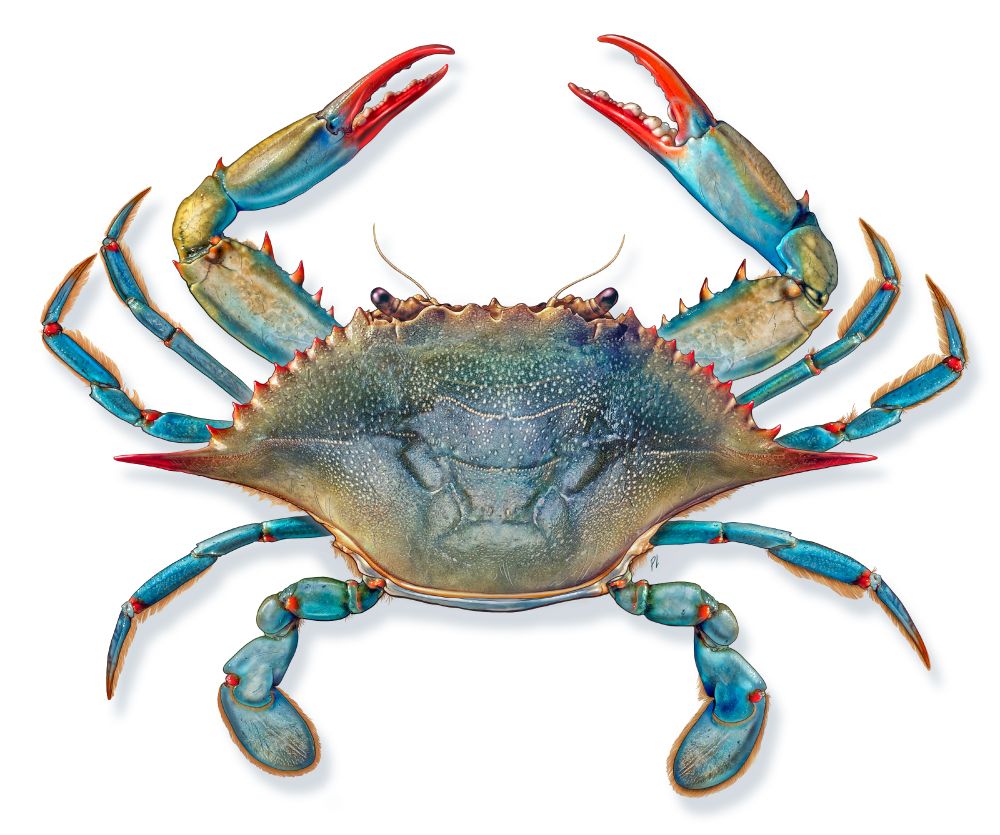
Detailed illustration of a female Blue Crab.
One of the iconic keystone species of the U.S. Atlantic Coast, the Blue Crab (Callinectes sapidus, female), or "beautiful, savory swimmer." For a new project.
🧪🌿🌎 #sciart #wildlife #scicomm #sciviz #wildlifeart #illustration #scientificillustration #natureart #visualscicomm #sciviz #scicomm
25.07.2025 12:29 — 👍 126 🔁 27 💬 2 📌 2

Digital illustration of the early Cambrian sponge, Falospongia ramosa. Art by Domenic Pennetta.
Happy #fossilfriday! ❤️ Here's my reconstruction of the Cambrian #sponge, Falospongia ramosa. 🪸 This genus is known from the Burgess Shale—where they once used their 'radiating fronds' to capture food.
#digitalart #sciart #scientificillustration #paleoart #paleontology #invertebratebiology #invert
02.05.2025 16:02 — 👍 34 🔁 6 💬 1 📌 0

Digital illustration of the clearwing moth, Hemaris thysbe. Art by Domenic Pennetta.
Do you have a favorite #moth? 🦋 Mine is the hummingbird clearwing! These moths are active during the day and are excellent #pollinators of native plants like wild bergamot, buttonbush, milkweed, and thistle. 🌼
#sciart #scientificillustration #wildlifeart #nature #invert #bugsky
19.05.2025 17:00 — 👍 112 🔁 21 💬 10 📌 0

Pseudogygites latimarginata
#paleoart #art #sciart
22.07.2025 14:40 — 👍 7 🔁 1 💬 0 📌 0
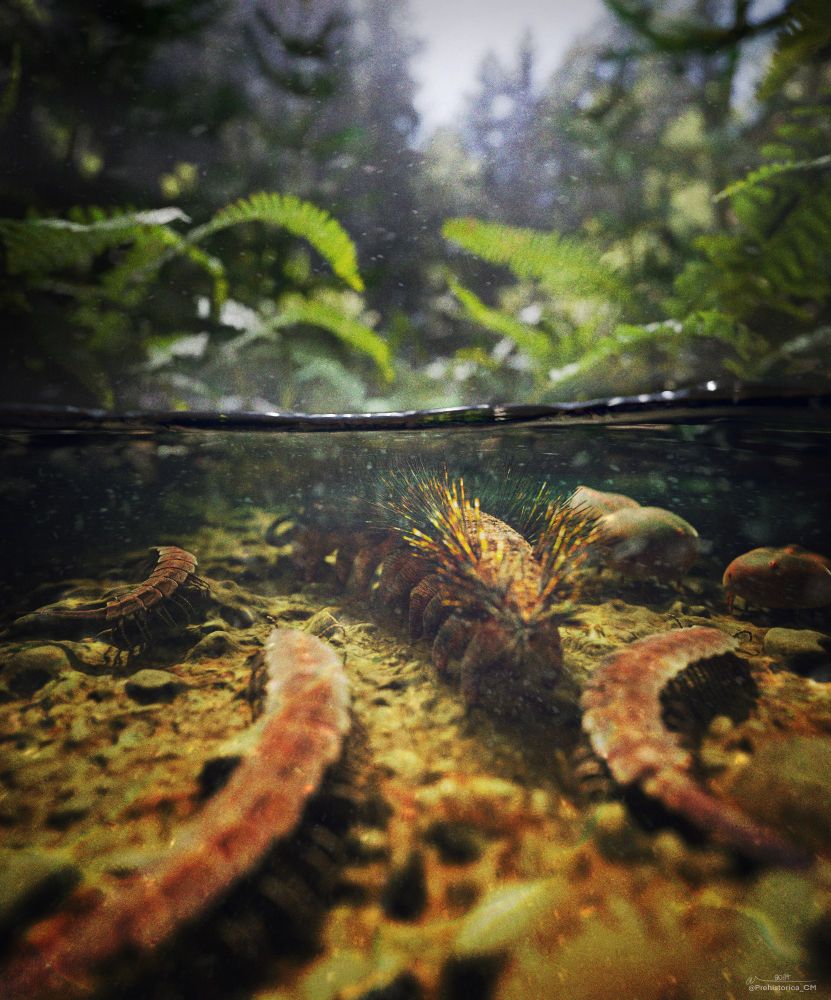
Meet Palaeocampa anthrax, a newly discovered Carboniferous lobopodian, and 150 year old mystery fossil!
Palaeocampa is an exceptional lobopodian - it lived in rivers and lakes, bristled with thousands of poisonous spines, and more. 🧵
Open access: nature.com/articles/s42...
23.07.2025 09:44 — 👍 184 🔁 62 💬 3 📌 8

Acanthalomina minuta, a small but stunning trilobite found in Czech Republic from the Silurian period. #trilobite #fossil #paleontology #FossilFriday #eurypterid #silurian
18.07.2025 22:47 — 👍 38 🔁 12 💬 1 📌 0

The head and body of a eurypterid preserved on yellowish rock. The animal has a broad, disc-shaped body and a narrow postabdomen behind. The head is roughly triangular and preserves large paddles extending behind and short, robust legs with many large, thick spines at the front.
The eurypterid Carcinosoma newlini, from the cover of my recently published eurypterid book, for #FossilFriday. ⚒️🧪
The specimen is from Kokomo, Indiana, which I think preserves some of the most photogenic eurypterid fossils.
You can read the publication here: doi.org/10.1206/0003...
13.06.2025 15:22 — 👍 72 🔁 25 💬 3 📌 1
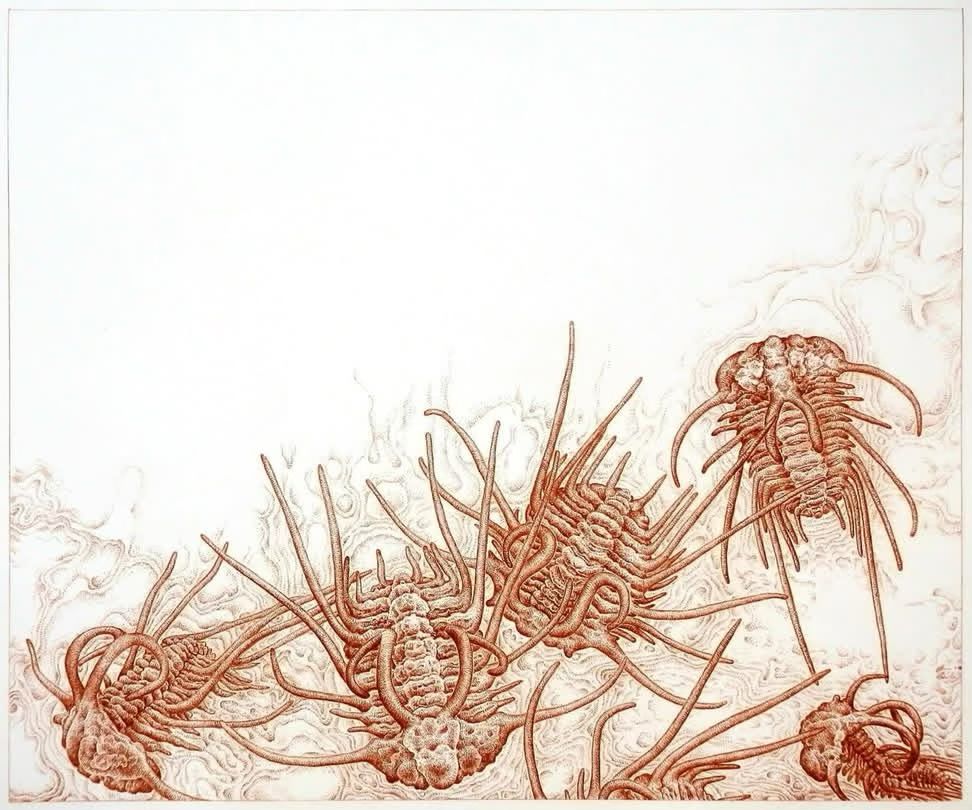
Dicranurus Convergence
1/2019 20 X 24 Inches [50.8 X 61 cm] Colored Pencil on Paper
#sciart #gawoski #trilobite #fossil
13.06.2025 16:52 — 👍 89 🔁 16 💬 2 📌 0

Winneshiekia youngae, an Ordovician dekatriatan chelicerate. It shares traits with e.g., xiphosurans (such as the eye ridge) and chasmataspidids (13-segmented opisthosoma).
#chelicerata #dekatriata #paleoart #paleontology #art #ordovician #arthropod #Winneshiekia #Winneshiek
01.06.2025 17:32 — 👍 10 🔁 1 💬 0 📌 0

Bohemiatupus elegans
01.06.2025 14:28 — 👍 156 🔁 38 💬 2 📌 0


Houcaris consimilis (=Ramskoeldia consimilis) is a Lower Cambrian predatory radiodont from the Chengjiang Biota.
#radiodonta #radiodont #Houcaris #Ramskoeldia #Amplectobelua #Amplectobeluidae #arthropod #arthropoda #lobopodia #paleoart #paleontology #cambrian #art
18.05.2025 14:03 — 👍 8 🔁 2 💬 2 📌 0

An image of a fossil horseshoe crab on a pale rock. The fossil is beige and shows the head, body and tail of the animal. The head is elongated and shovel-shaped, which is very unusual.
A very unusual ancient horseshoe crab for #FossilFriday. This creature is from the Ordovician (425 million years ago) of Michigan and looks like no other horseshoe crab that we know of. This specimen also has a secret which will be revealed when the description is published shortly! 🧪⚒️
09.05.2025 16:14 — 👍 80 🔁 20 💬 2 📌 1
Thanks, I understand
23.04.2025 13:32 — 👍 1 🔁 0 💬 0 📌 0
Is there any way to receive the info from such a presentation without participating in the meeting live?
22.04.2025 22:00 — 👍 1 🔁 0 💬 1 📌 0
I suppose there will be some mentions of the Acheronauta relative, hurdiid, marellomorphs, annelids, aplacophoran, odontogriphid, lobopodian, and more, am I right? BTB is my favorite lagerstatte, not only do the fossils look pleasing, but the preservation and biota is incredible too.
22.04.2025 21:58 — 👍 2 🔁 0 💬 1 📌 0

Digital illustration of two common pill bugs, Armadillidium vulgare. Art by Domenic Pennetta.

A digital illustration of an adult brickwork woodlouse, Porcellio spinicornis, by artist Domenic Pennetta.

Digital illustration of the skirted woodlouse, Oniscus asellus, traversing bark. Art by Domenic Pennetta.
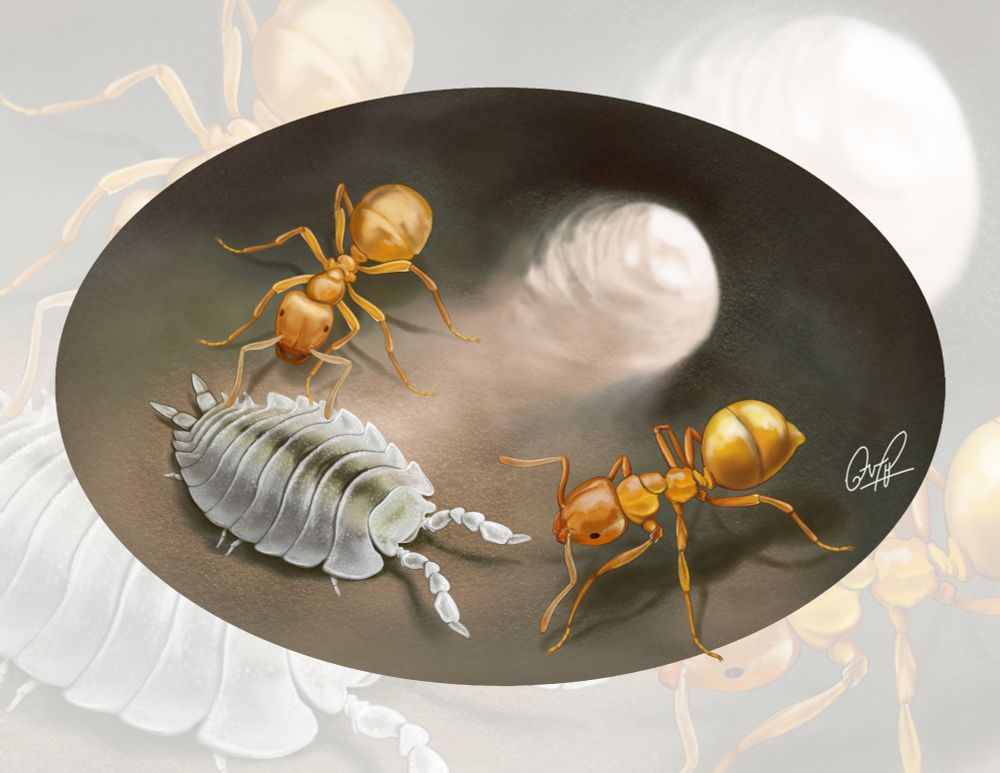
Digital illustration of the ant woodlouse, Platyarthrus hoffmannseggi, created by Domenic Pennetta.
Would you flip a #pillbug isopod over if you found one stuck on its back? 💖 Check out these illustrations depicting four common isopod species of North America. Which one do you like the most?!
#sciart #scientificillustration #digitalillustration #wildlifeart #nature #bugsky #isopods #invertebrates
22.04.2025 13:06 — 👍 206 🔁 37 💬 7 📌 2
What would a paraphyletic arachnid tree look like?
29.03.2025 18:31 — 👍 0 🔁 0 💬 1 📌 0

Graphite illustration of a viperfish on tone paper. Art by Domenic Pennetta.
Happy #fishfriday, everyone! 🐟 Viperfishes are characterized by their long, needle-like teeth and hinged lower jaws. I had lots of fun drawing this fearsome fish!
#sciart #scientificillustration #wildlifeart #nature #marinebiology #deepsea #fish #drawing
28.03.2025 16:05 — 👍 130 🔁 28 💬 2 📌 0
I don't think that's a valid placement, morphology, evolutionary history, and everything else besides some genetic studies go against that. Xiphosurans are most likely more basal than arachnids, and maybe even eurypterids. That's just my opinion (that I share with some more people) and I stand by it
29.03.2025 17:50 — 👍 0 🔁 0 💬 1 📌 0
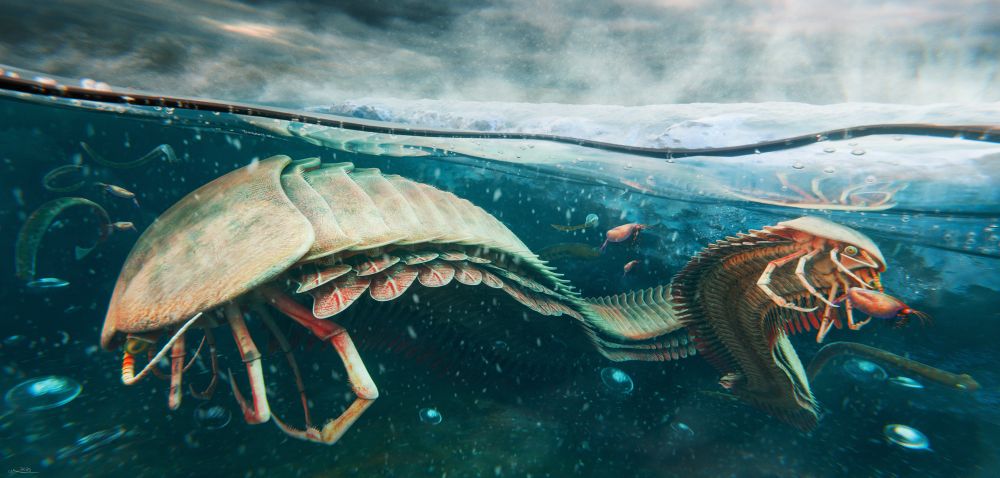
Keurbos susanae, a newly described giant arthropod from the Ordovician-age Soom Shale of South Africa.
29.03.2025 11:06 — 👍 291 🔁 95 💬 13 📌 2
Amateur artist, master procrastinator
Adores anything living, but extinct stuff especially
Jack-of-all-trades, I do drawings, blockbench models, pixel art and clay
Parasitologist (they/them) who writes a blog about parasites (http://dailyparasite.blogspot.com/)
and also draws monster girls https://www.deviantart.com/the-episiarch/gallery
🐬 Creator of DOLPHIN CHAMBER, lover of nostalgia and fun music.
⭐ Contact: inbox(at)seabomb[dot]net
💥 https://seabomb.net/
some sort of..?
https://gooeyphantasm.bandcamp.com/
Interested in phylogeny and evolution of metazoans and related topics
化石・現生問わず,後生動物(動物)の初期(主にカンブリア紀以前)の系統・進化などに強い興味を持っています.形態系統学や分子系統学の理論や手法などにも関心があります.
More active in https://x.com/Hoyaboya11
Macro photographer, cat slave, dedicated to flood your feed with cool spiders, insects, snakes, or anything small that moves.
Palaeoart & various other biology art. Palaeontology student (3rd year) and into a range of hiking and nature stuff (though I particularly like strange arachnids and crustaceans).
野生のカンブリアオタ
浴槽はデスロールのためにある
https://www.pixiv.net/users/84000423
https://linktr.ee/psych0angel
i sample dreamcast games i haven't played
Producer, graphic designer, cyber entrepreneur. Retrofuturistic art and sound.
MAGAts, Technocrats, Zionists, Evangelists and similar filth will never be welcome in our community.
https://linktr.ee/ghostmemory2002
Illustrator | Paleoartist 🎨
📧 : himarudolf19@gmail.com
Prints 🖼️: https://www.inprnt.com/gallery/rudolfhima/
趣味で虫とかの絵を描いてる(練習中)/蟲神器/蟲神器公認サポーター/フォロバはある程度する/LINEスタンプ作ってる/#古生物 #蟲神器 /アイコン、ヘッダー自作
Twitter(現𝕏): https://x.com/livyatan2_12?s=21
mainly posting bugs i keep or find in nature
music guy | feel free to use my tracks anywhere, just credit me | pfp by DedRam
https://ffm.bio/upfoolin
🇨🇦 Scientific Illustrator | Speculative Evolution Artist | (He/Him)
Inspired by invertebrates, prehistoric fauna, and life on Earth. Creator of Project Perditus and Astrovitae Magazine.
Portfolio: www.domenicpennetta.com
🌿 Commissions are always open! 🌿
I'd rather be crinoid hunting.
Invertebrate enthusiast, Paleo artist, Fossil prep, President of Friends of the University of Michigan Museum of Paleontology
I do science with fossils, X-rays and computers at the Unviersity of Manchester and Natural History Museum, UK. Working at Museum für Naturkunde, Berlin until September '25. Run the Palaeontological Association web systems.
russellgarwood.co.uk










 06.08.2025 14:40 — 👍 55 🔁 16 💬 2 📌 0
06.08.2025 14:40 — 👍 55 🔁 16 💬 2 📌 0
















